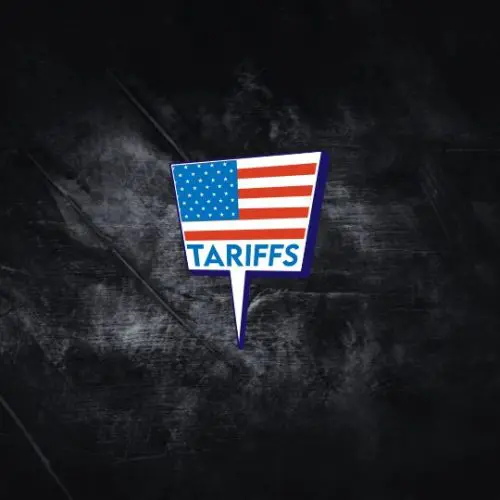 The 2025 U.S. tariff wave has sent a shiver down the spine of the international art market, creating confusion and unexpected costs for art dealers and collectors. While these trade measures were designed to protect American interests, they’ve instead introduced new risks and layers of bureaucracy that are reshaping how — and where — art is bought and sold.
The 2025 U.S. tariff wave has sent a shiver down the spine of the international art market, creating confusion and unexpected costs for art dealers and collectors. While these trade measures were designed to protect American interests, they’ve instead introduced new risks and layers of bureaucracy that are reshaping how — and where — art is bought and sold.
This article pulls together insights from recent reports by Artsy, One Art Nation, and Center for Art Law. You’ll find practical recommendations to help your gallery navigate this tariff chaos. Some of these recommendations may not be appropriate if you’re based in the US or if you’re not operating at the top of the art market, but there are several suggestions that you can begin to consider while we hope and pray things settle down soon.
Are You Feeling Caught in the Middle?
At first, you might have thought your gallery was safe. After all, fine art is still legally exempt from tariffs under U.S. law. But as many dealers have quickly discovered, enforcement is inconsistent, and customs officers now have broad discretion to decide what qualifies as “art” versus a “decorative object.”
This grey area has likely caused you some headaches. Works that combine materials — like metal, wood, fabric, or found objects — can be flagged for tariffs. Antiques, design objects, and mixed-media pieces often fall into uncertain categories. Suddenly, something as simple as shipping a sculpture back from an international art fair could mean unexpected duties or costly delays.
As reported by Artnet and The Art Newspaper, confusion spread quickly this spring as dealers scrambled for guidance. You’ve probably had to become an expert in origin documentation, material classification, and customs language almost overnight.
The Bigger Picture: A Shift Away from U.S. Dominance
What does this mean for you? The global art trade is shifting. Collectors and gallerists are increasingly using free ports and offshore storage in places like Geneva, Luxembourg, or Singapore to avoid triggering import obligations, but this only makes sense for the highest end of the market.
As Artsy pointed out in its August report, this isn’t just about tariffs — it’s a catalyst for deeper change. The U.S. market is being forced to rethink its future, and so are you. Where you source, sell, and even store art may need to evolve as you adapt to this new global reality and of course, change is not easy.
Who Are the Winners and Losers in the Tariff Era
- Winners: Logistics companies, customs advisors, and international auction houses are thriving on the added complexity. Galleries outside the U.S. — especially in London and Hong Kong — are capturing more market share.
- Losers: U.S.-based galleries, mid-market dealers, and collectors who now face higher costs, slower transactions, and uncertainty when acquiring international works. Sigh……..
If you’re running a smaller or mid-size gallery, I know you are seeing that even minor shipping delays or unexpected duties can eat into your profits or discourage collectors from making new acquisitions. Decorative arts and design sectors are feeling this even more since these works often fall outside clear fine-art exemptions.
What Art Galleries Can Do Now in Response to US Tariffs
While you can’t control policy uncertainty, there are steps you can take to protect your business and stay flexible:
- Audit your inventory and shipping routes. Identify which works might fall into “grey zones” and where your biggest exposure lies.
- Partner with experienced art logistics providers. Work with firms that specialize in art handling under the new rules — they can often pre-clear artworks or suggest safer routing options.
- Document everything meticulously. Origin, materials, and classification matter more than ever for tariff exemptions.
- Stay informed about evolving enforcement. Customs practices vary by port and can shift quickly — keep tabs on which entry points are more predictable. I realize this feels like an impossible task.
- Educate your clients. Be transparent about how tariffs and customs rules might affect timing or cost. This builds trust and helps manage expectations.
- Explore alternate venues. Consider non-U.S. fairs, offshore storage, or joint exhibitions with international partners to reduce friction.
- Revisit pricing and margins. Build in buffer room for potential logistics costs and delays, especially for mid-tier artworks.
To The Point
For many galleries, like you, the tariff situation feels like one more layer of uncertainty in an already complex art market. But it’s also an opportunity to modernize your operations, strengthen compliance, and rethink your geographic strategy.
As Artsy put it, the U.S. art market is being “forced to evolve for the better.” If you stay flexible, informed, and transparent, you’ll be well-positioned to weather the turbulence — and maybe even uncover new opportunities in the process.
I will continue to monitor this situation, and I hope you will share your findings and how you are pivoting.


Leave a Reply